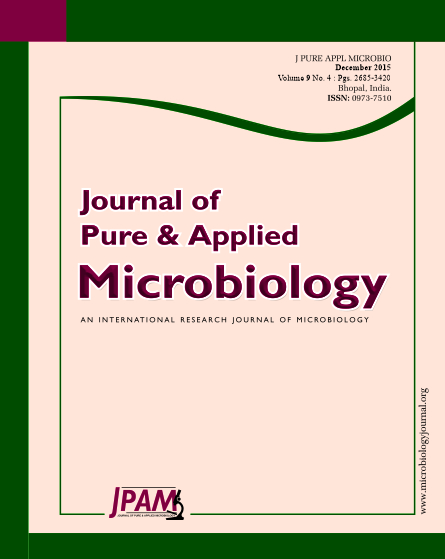The potential of malaria parasite (Plasmodium falciparum) generating resistance to currently used antimalarial drugs is a major curse for malaria patients. The multiple targets on which antimalarial drugs act hamper the occurrence of such resistance. As an essential metabolic enzyme involved in energy production in the parasite, the lactate dehydrogenase of P. falciparum (PfLDH) provides an alternative target for parasite killing. In the present study, we have efficiently optimized the fed-batch fermentation and downstream processing for high yield production of recombinant PfLDH using Escherichia coli. The fed-batch operation gives the freedom of manipulating the process via substrate feed rate. The rPfLDH was produced in previously optimized media (Modified Terrific Broth) by fed-batch fermentation using 5 L bioreactor. Fed-batch fermentation resulted in a wet weight of 98.6 g/L and dry cell biomass 24.2 g/L. With the improved downstream process, purified rPfLDH had a yield of 461.20 mg/L. Expression and purification were optimized and the expressed recombinant PfLDH was verified by sodium dodecyl sulfate polyacrylamide gel electrophoresis (SDS-PAGE) and Western blotting. The recombinant PfLDH was purified for uniform measurement of enzymatic activity and immobilized on 96-well plates for detection of PfLDH-targeted inhibitors. Hematin (HT) and Gossypol (GP) three well-known inhibitors of PfLDH, were chosen as positive inhibitors for evaluating the feasibility of the in-vitro colorimetric enzyme assay. The fed-batch fermentation and downstream processing methods optimized in this study have enormous application for high yield production of recombinant pLDH in a cost effective manner using bacterial system. The large scale production of recombinant PfLDH is useful in the diagnosis during the incidence of malarial infection and also it can be used as economic potential target site for the screening of chemotherapeutic agents for the development of novel antimalarial drugs.
PfLDH, Fed-batch fermentation, Malaria diagnosis, Antimalarial.
© The Author(s) 2015. Open Access. This article is distributed under the terms of the Creative Commons Attribution 4.0 International License which permits unrestricted use, sharing, distribution, and reproduction in any medium, provided you give appropriate credit to the original author(s) and the source, provide a link to the Creative Commons license, and indicate if changes were made.


